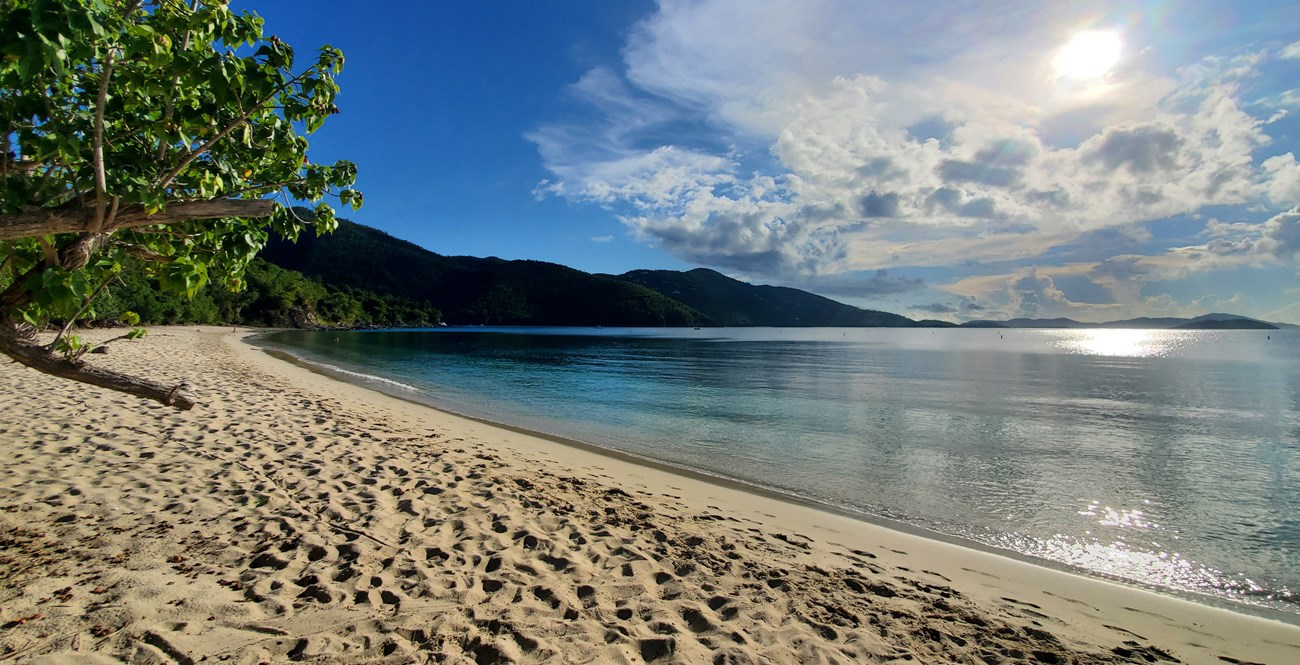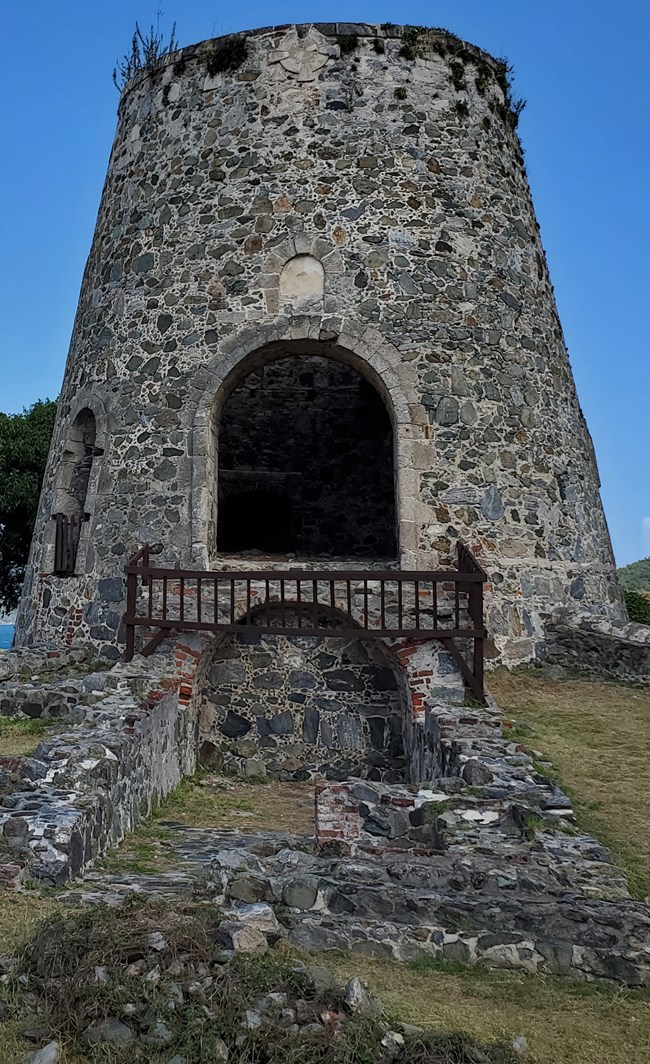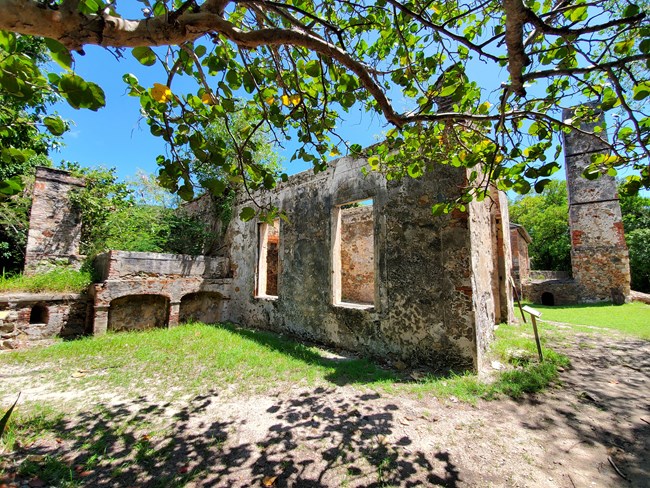
Photo courtesy of Parnicza/NPS Beaches
Trunk Bay Beach is considered one of the most beautiful beaches in the world. It features a 225-yard long underwater snorkeling trail and .3 miles of beach to walk on and accessible paths and beach ramps. Amenities include snack shack, bar, snorkel gear rentals, a beach shop, restrooms, and showers. There is a day-use fee of $5.00 per person. Cinnamon Bay Beach is the longest beaches in Virgin Islands National Park, and is now the home of Cinnamon Bay Beach and Campground. This facility offers deluxe eco-tents, platform tent sites, and cottages. Other amenities include breakfast and dinner at the Rain Tree Cafe, souvenirs, clothing, grab-and-go food items and other essentials which are available at the Cinnamon Bay Beach Shop. A watersports center is located on the beach. There are accessible paths through the campground. Maho Bay Beach offers .3 miles of beach for your walking enjoyment, and several large seagrass areas perfect for viewing turtles. Amenities include pavilions to rent for your family party or wedding, as well as restrooms at the western end of the beach. There is a large parking area at the eastern end of the beach. Please do not park on or in the vegetation. Francis Bay Beach is another great place to view turtles, go for long swims, snorkel along the rock shoreline at the north end of the bay or go for a walk on the ¼-mile long beach. Amenities include parking, picnic tables, toilets, and a trail around the Francis Bay pond. For the safety of you and the wildlife, please do not touch the coral or sea turtles, and always remember to use reef-save sunscreen. Picnic areas are located on several of the beaches and offer tables and grills. 
Photo courtesy of Parnicza/NPS. Historic Sites
Annaberg Plantation was largest sugar producing estate on St. John. At the height of Annaberg's production, over 600 enslaved persons lived and worked the plantation. The Leinster Bay waterfront, upon which Annaberg was built, is now part of the National Underground Railroad Network to Freedom. Many enslaved persons living on St. John used the Leinster Bay waterfront to escape to freedom on nearby Tortola of the British Virgin Islands. Catherineberg, was another sugar plantation and factory is located on Centerline Road overlooking Cinnamon Bay. While part of the national park, it is not as developed as Annaberg. However, much of the windmill and the boiling house remain. 
Photo courtesy of Parnicza/NPS. This factory was the latest operational sugar mill on St. John, with opertaions having ceased following a fatal accident in 1908. The factory was once powered by its animal mill, but was converted to steam power sometime after 1861. The remnants of the steam engine are still largely intact. Signage throughout the factory provides visitors with information on the how the factory operated. |
Last updated: June 6, 2022
